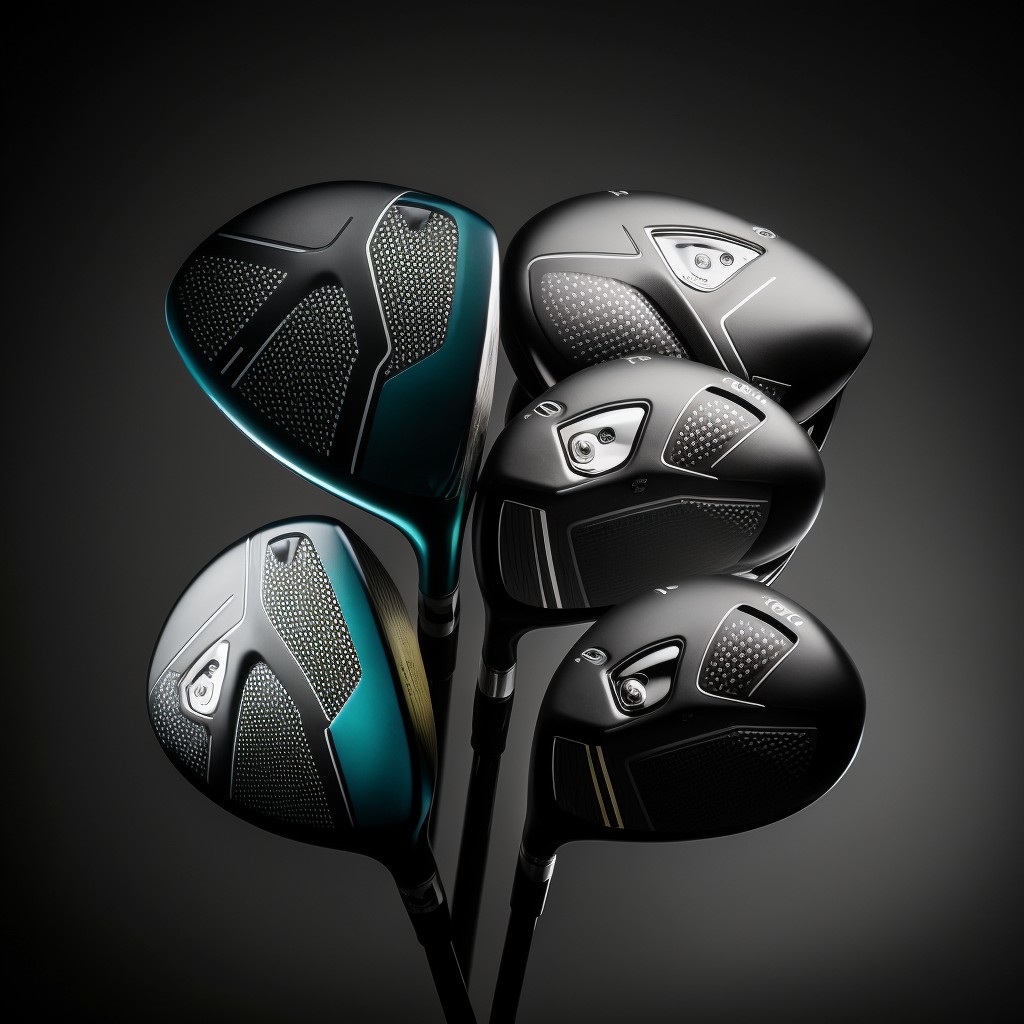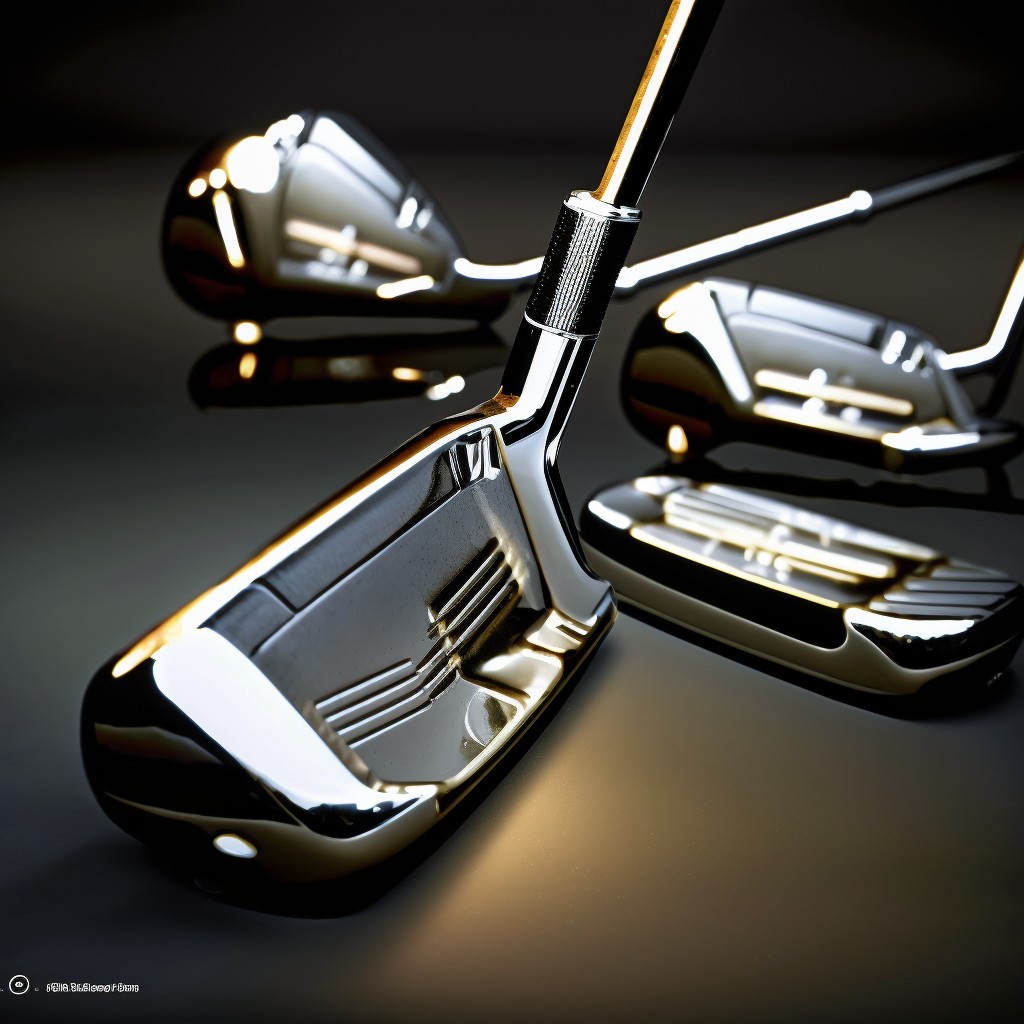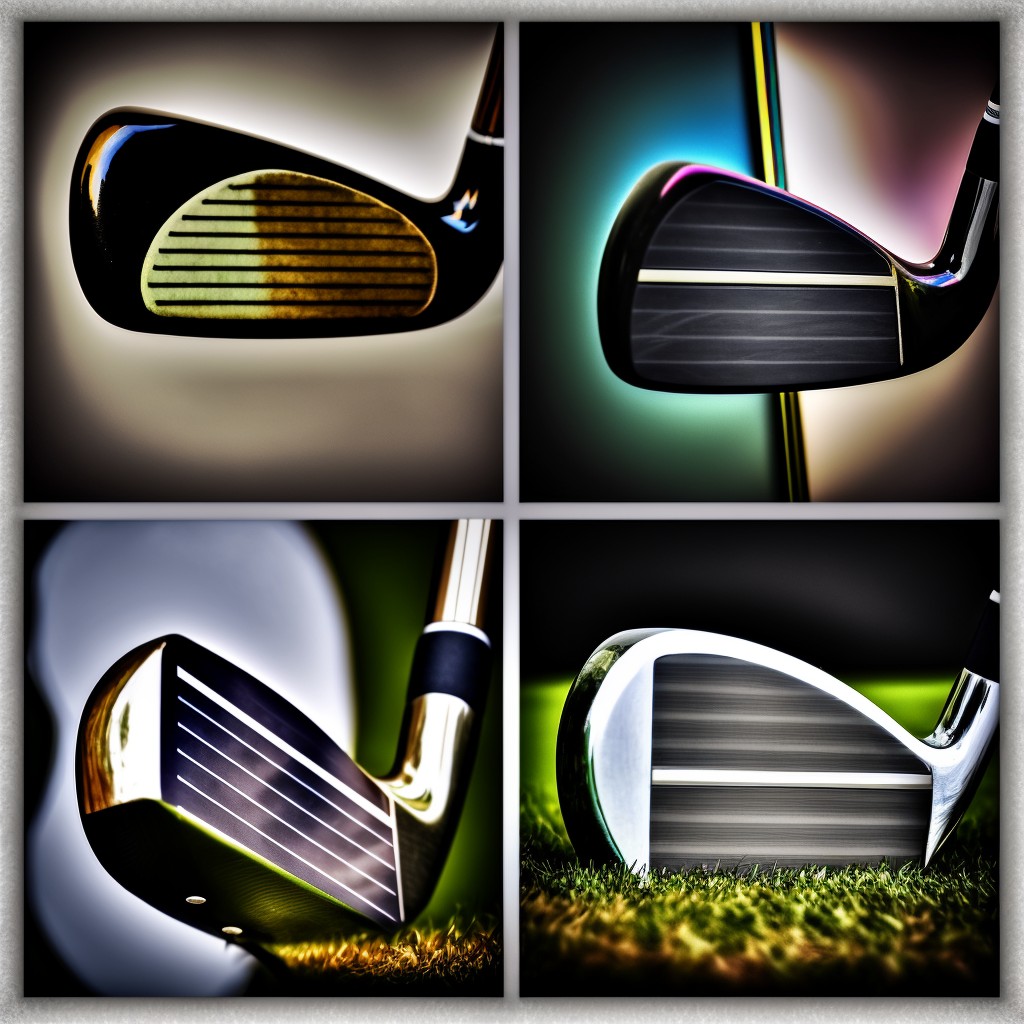
Hey there, fellow golf enthusiast! As you know, having the right clubs in your bag can make all the difference. But with so many options, it’s easy to get overwhelmed. That’s why we’ve put together this guide. We’ll focus on the 5 most important clubs every golfer should own. These clubs will give you the best chance to improve your game and enjoy your time on the course. So, let’s dive in and explore these essential clubs together!

1. Driver
Importance of the driver in your bag
Ah, the driver! This club is a real game-changer. It’s the longest club in your bag and the one you’ll use primarily for tee shots on longer holes. The driver helps you achieve maximum distance, setting you up for success on the fairway. A good driver can give you a significant advantage, especially when playing longer courses. With the right driver, you’ll be able to improve your game, gain confidence on the tee box, and have more fun on the course.
Key features to look for in a driver
When looking for a driver, there are a few essential features to keep in mind:
- Loft: The loft angle determines the trajectory of your shots. Higher loft angles typically result in higher, shorter flights, while lower lofts lead to lower, longer flights. As a general rule, slower swing speeds benefit from higher lofts, and faster swing speeds work better with lower lofts.
- Shaft Flex: The flex of the shaft impacts the accuracy and distance of your shots. Choose a flex that matches your swing speed: extra stiff (XS) for faster swingers, stiff (S) for moderate swingers, regular (R) for average swingers, and senior (A) or ladies (L) for slower swingers.
- Clubhead Size: Drivers come in various clubhead sizes, measured in cubic centimeters (cc). A larger clubhead offers more forgiveness on off-center hits, while a smaller one provides more control. The maximum legal clubhead size is 460cc.
- Adjustability: Some drivers have adjustable features like loft, lie angle, and weight placement. These options can help you fine-tune your driver to suit your swing and personal preferences.

2. Putter
The critical role of putters in golf
Let’s talk putters, the unsung heroes of golf! Putters play a crucial role in every golfer’s game, helping you sink those all-important putts on the green. As the saying goes, “drive for show, putt for dough.” While powerful drives may turn heads, it’s the putter that can make or break your scorecard. A good putter is essential for shaving strokes off your game, improving your consistency, and boosting your confidence on the green. After all, sinking a long, tricky putt feels just as satisfying as crushing a long drive down the fairway.
Essential putter characteristics
When choosing a putter, consider these key characteristics:
- Head Design: There are three main types of putter heads – blade, mallet, and mid-mallet. Blade putters are the most traditional, with a slim, flat profile. Mallet putters have a larger, rounder head, offering more forgiveness and stability. Mid-mallet putters fall in between, providing a balance of feel and forgiveness.
- Length: Putter length is crucial for a comfortable, consistent stroke. Standard putter lengths range from 32 to 36 inches. Your height and posture will determine the best length for you.
- Alignment Aids: Many putters feature alignment aids, such as lines or dots on the clubhead, to help you square up your putter face to the target line. These aids can improve your accuracy and consistency.
- Face Material: Putter faces come in various materials, including metal, polymer, and grooved surfaces. Metal faces provide more feedback and a firmer feel, while polymer faces offer a softer feel and better distance control.

3. Irons (7-iron and 9-iron)
Why irons are essential in your golf bag
Irons are the workhorses of your golf bag, helping you navigate the fairway and approach the green with precision. They’re versatile clubs, perfect for those mid-range shots when you need to control both distance and trajectory. Mastering your irons can make a huge difference in your game, giving you the ability to tackle a variety of situations and ultimately lowering your scores.
7-iron and 9-iron: differences and use cases
The 7-iron and 9-iron may look similar, but they serve different purposes on the course:
7-iron: This club has a lower loft angle (usually around 34 degrees) and is ideal for longer approach shots, typically between 140 and 170 yards for average golfers. The 7-iron produces a lower, more penetrating ball flight, which helps when you need to keep the ball under the wind or navigate around obstacles.
9-iron: With a higher loft angle (around 41 degrees), the 9-iron is designed for shorter approach shots, usually between 110 and 130 yards. The higher loft results in a higher ball flight, making it perfect for attacking tight pin positions and stopping the ball quickly on the green.
When choosing between a 7-iron and a 9-iron, consider the distance to your target, the wind, and the desired ball flight. A well-executed shot with the right iron can put you in a prime position for a birdie or par.
Key features to consider when choosing irons
When selecting irons, keep these important features in mind:
- Cavity Back vs. Muscle Back: Cavity back irons have a hollowed-out area on the back of the clubhead, providing more forgiveness and higher launch angles. Muscle back irons, also known as blades, have a solid back and offer more control and feedback but are less forgiving.
- Shaft Material: Iron shafts are typically made of steel or graphite. Steel shafts are heavier and provide more control and consistency, while graphite shafts are lighter, promoting faster swing speeds and more distance.
- Shaft Flex: Like with drivers, iron shaft flex affects accuracy and distance. Choose a flex that matches your swing speed (XS, S, R, A, or L).
- Lie Angle: The lie angle is the angle between the club’s shaft and the ground when the clubhead is in its proper address position. A correct lie angle ensures solid contact and accurate shots.

4. Wedge (Sand Wedge)
The significance of wedges in your bag
Wedges are the ultimate specialty clubs, designed to help you escape tricky situations and get closer to the hole. They’re crucial for those high-lofted shots around the green, where precision and control are key. A well-played wedge shot can save you strokes and keep your scorecard intact. So, never underestimate the power of a good wedge in your golf bag!
Sand wedge: purpose and advantages
The sand wedge is a must-have club in any golfer’s arsenal. With a loft angle typically between 54 and 58 degrees, it’s designed to help you escape bunkers and tackle short, delicate shots around the green. The sand wedge’s unique features, such as its wide, heavy sole and high bounce angle, make it perfect for gliding through sand and thick rough with ease.
The advantages of a sand wedge include:
- Improved bunker play: The sand wedge’s design helps you lift the ball out of the sand without digging too deep, making it easier to escape bunkers.
- Versatility around the green: Sand wedges are great for pitch shots, chip shots, and even short lob shots when you need to get the ball up and down quickly.
- Spin control: The sand wedge’s high loft and groove design help generate spin, allowing you to stop the ball quickly on the green.
Essential wedge characteristics
When selecting a sand wedge, consider these important features:
- Loft: Choose a loft that complements your other wedges and fills any gaps in your distance coverage.
- Bounce: Bounce is the angle between the leading edge and the lowest point of the sole. Higher bounce wedges are better for soft conditions and fluffy sand, while lower bounce wedges work well on firmer ground and tight lies.
- Grind: The grind is the shaping of the sole, which affects the club’s turf interaction. Different grinds suit different swing types and course conditions.
- Groove Design: Grooves on the clubface help generate spin and control. Look for a wedge with sharp, deep grooves for better spin performance.

5. Hybrid (5-hybrid)
The value of hybrids in a golf bag
Hybrids are the perfect blend of woods and irons, offering golfers the best of both worlds. These versatile clubs can help you bridge the gap between your long irons and fairway woods, providing a more forgiving and consistent option for those tricky shots. Having a trusty hybrid in your bag can be a game-changer, simplifying your club selection and boosting your confidence on the course.
5-hybrid: versatility and benefits
The 5-hybrid is a popular choice among golfers, and for good reason. It typically replaces a 5-iron or even a 4-iron, offering these advantages:
- Ease of use: Hybrids are easier to hit than long irons, thanks to their larger, more forgiving clubheads and lower center of gravity.
- Higher launch: The 5-hybrid can produce a higher launch angle than a comparable iron, helping you clear hazards and hold greens more effectively.
- Better from the rough: The hybrid’s wide sole glides through the rough more smoothly than a long iron, making it easier to get the ball airborne.
- Versatility: The 5-hybrid can be used off the tee, from the fairway, or even from the rough, providing a versatile option for a variety of situations.
Important features to consider when choosing a hybrid
When selecting a 5-hybrid, keep these key features in mind:
- Loft: Choose a loft that fits your distance gaps and complements your existing clubs.
- Shaft Material: Like with other clubs, hybrid shafts are typically made of steel or graphite. Graphite shafts are lighter and can generate more clubhead speed, while steel shafts provide more control.
- Clubhead Design: Look for a hybrid with a low center of gravity and a wide sole, which will promote higher launch and better turf interaction.
- Adjustability: Some hybrids offer adjustable features, such as hosel adjustments or movable weights, allowing you to fine-tune the club’s performance.
Conclusion of the 5 Most Important Golf Clubs
To sum up, these are the 5 essential golf clubs you should have in your bag:
- Driver: This club is key for long, accurate tee shots and setting up your approach.
- Putter: Crucial for sinking those clutch putts and keeping your score low.
- Irons (7-iron and 9-iron): These irons are vital for precise mid-range shots and approaching the green.
- Wedge (Sand Wedge): A must-have for escaping bunkers and mastering your short game.
- Hybrid (5-hybrid): This versatile club bridges the gap between long irons and fairway woods, offering more forgiveness and consistency.
Final Thoughts On Building Your Golf Club Set
As you build your golf club set, remember that the right mix of clubs can make a world of difference in your game. Focus on finding clubs that suit your skill level, playing style, and course conditions. Don’t be afraid to experiment and try different brands, lofts, and models. Ultimately, the most important factor is how the clubs feel in your hands and how well they perform on the course. Happy golfing!

Frequently Asked Questions
Q1. How many clubs are allowed in a golfer’s bag?
A1. According to the rules of golf, a golfer is allowed to carry a maximum of 14 clubs in their bag during a round. This includes all types of clubs, such as drivers, fairway woods, hybrids, irons, wedges, and putters.
Q2. How do I determine the right golf clubs for my skill level?
A2. To choose the right clubs for your skill level, consider factors such as your swing speed, handicap, and personal preferences. Beginners and high handicappers should look for more forgiving clubs with larger sweet spots, while more experienced golfers can opt for clubs that offer greater control and shot-shaping ability.
Q3. Can I mix and match different brands and models of golf clubs in my bag?
A3. Absolutely! You can mix and match different brands and models of golf clubs in your bag, as long as they meet the regulations set by the rules of golf. This allows you to create a custom set tailored to your specific needs and preferences.
Q4. How often should I replace my golf clubs?
A4. The frequency of replacing golf clubs varies depending on factors such as usage, wear and tear, and advancements in golf club technology. Generally, golfers should consider replacing their clubs every 5-8 years, or when they notice a significant decline in performance.
Q5. Should I invest in custom-fitted golf clubs?
A5. Custom-fitted golf clubs can be a great investment, especially for serious golfers who want to optimize their performance on the course. A professional club fitting will ensure that your clubs are tailored to your unique swing characteristics, which can lead to improved consistency, accuracy, and overall enjoyment of the game.
Q6. How do I clean and maintain my golf clubs?
A6. Regular cleaning and maintenance are essential for keeping your golf clubs in top condition. Clean your clubs after each round with a damp cloth, mild soap, and warm water. Use a soft brush to remove dirt and debris from the grooves. Dry your clubs thoroughly to prevent rust and store them in a cool, dry place.
Q7. What factors should I consider when choosing the shaft for my golf clubs?
A7. When choosing a shaft for your golf clubs, consider factors such as material (steel or graphite), flex (extra stiff, stiff, regular, senior, or ladies), and weight. Your choice will depend on your swing speed, skill level, and personal preferences. It’s recommended to consult with a club fitter or golf professional to find the best shaft for your game.
We want to hear from you! Let us know your comments below.

ABOUT THE AUTHOR
Jim has been an avid golfer and golf fan for over 40 years. He started a YouTube channel called Golf Plus about a year ago and it has been wildly successful. It only made sense to expand and reach more golfers with this site and social media. You can learn more about Jim and Golf Plus Media Group by visiting our About Page.







Comments (2)
The Secret to Playing Better Golf in the Windsays:
May 1, 2023 at 12:11 pm[…] is the wind blowing directly into your face, making the ball travel a shorter distance. It’s important to factor this in when selecting a club and planning your […]
Secret Pre Shot Routines of Pro Golferssays:
May 10, 2023 at 9:21 am[…] importance of pre-shot routines in golf cannot be overstated. As you know, golf is not just a physical game; it’s a mental one too. […]